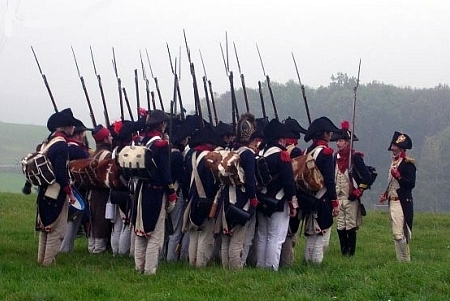
Prior to the Revolution, the French Army was composed of three-battalion regiments. One of the early results of the revolution was the influx of enthusiastic but inexperienced volunteers, all determined to fight for their ideals. It was quickly realised that these new volunteer units would be ineffective without some sort of experienced core to help the new troops. Just prior to the battle of Valmy (1792), it was decided to form demi-brigades, each made up of one regular battalion from a pre-revolutionary regiment combined with two battalions of volunteers.
By 1793, many of the volunteers had disappeared, while the increasingly radical revolution had alienated many officers, including General Dumouriez ( the French commander at Valmy) to the extent that they deserted the cause. The formation of the First Coalition meant that the French army was now massively outnumbered. The immediate response was to call a levee en mass, in August 1793 making all men between the ages of 18 and 25 liable for military service (an early form of conscription).
The new demi-brigades were adopted by the entire French army in 1794. These new formations soon gelled to provide the core of the revolutionary armies that first helped defend the revolution and then helped Napoleon to achieve his conquests. The demi-brigades were known by numbers rather than names. In theory, each demi-brigade numbered around 3,000 men, split into three battalions of 1,050 men. Standard line infantry battalions contained one grenadier company of 90 men and eight fusilier companies of 120 men. In practice, the demi-brigades often fell far below this theorical maximum, often failing to reach even 2,000 men, but despite this they proved to be an effective fighting force.
No comments:
Post a Comment